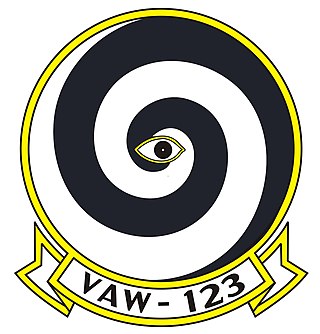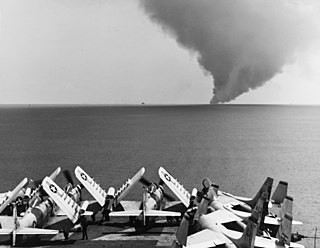Related Research Articles

The TomahawkLand Attack Missile (TLAM) is a long-range, all-weather, jet-powered, subsonic cruise missile that is primarily used by the United States Navy and Royal Navy in ship and submarine-based land-attack operations.

Bomb disposal is an explosives engineering profession using the process by which hazardous explosive devices are disabled or otherwise rendered safe. Bomb disposal is an all-encompassing term to describe the separate, but interrelated functions in the military fields of explosive ordnance disposal (EOD) and improvised explosive device disposal (IEDD), and the public safety roles of public safety bomb disposal (PSBD) and the bomb squad.
The Mark 84 or BLU-117 is an American general-purpose bomb. It is the largest of the Mark 80 series of weapons. Entering service during the Vietnam War, it became a commonly used US heavy unguided bomb to be dropped. At the time, it was the third largest bomb by weight in the US inventory behind the 15,000-pound (6,800 kg) BLU-82 "Daisy Cutter" and the 3,000-pound (1,400 kg) M118 "demolition" bomb. It is currently sixth in size due to the addition of the 5,000 lb (2,300 kg) GBU-28 in 1991, the 22,600 lb (10,300 kg) GBU-43/B Massive Ordnance Air Blast bomb (MOAB) in 2003, and the 30,000 lb (14,000 kg) Massive Ordnance Penetrator.

The Mark 83 is part of the Mark 80 series of low-drag general-purpose bombs in United States service.
The Mark 82(Mk82) is an unguided, low-drag general-purpose bomb, part of the United States Mark 80 series. The explosive filling is usually tritonal, though other compositions have sometimes been used.

The AGM-154 Joint Standoff Weapon (JSOW) is a glide bomb that resulted from a joint venture between the United States Navy and Air Force to deploy a standardized medium range precision guided weapon, especially for engagement of defended targets from outside the range of standard anti-aircraft defenses, thereby increasing aircraft survivability and minimizing friendly losses. The designation of the Joint Standoff Weapon as an "air-to-ground missile" is a misnomer, as it is an unpowered bomb with guidance avionics, similar to the older GBU-15.

Hawthorne Army Depot (HWAD) is a U.S. Army Joint Munitions Command ammunition storage depot located near the town of Hawthorne in western Nevada in the United States. It is directly south of Walker Lake. The depot covers 147,000 acres (59,000 ha) or 226 sq. mi. and has 600,000 square feet (56,000 m2) storage space in 2,427 bunkers. HWAD is the "World's Largest Depot". It is divided into three ammunition storage and production areas, plus an industrial area housing command headquarters, facilities, engineering shops, etc.
ROF Glascoed was initially a UK government-owned, Royal Ordnance Factory (ROF). It was designed as one of 20 munitions filling factories. It was planned as a permanent ROF with the intention that, unlike some other similar facilities, it would remain open for production after the end of World War II. After privatisation of the Royal Ordnance Factories in the 1980s it became part of Royal Ordnance plc and later a production unit of BAE Systems. It was served by the Great Western Railway's Coleford, Monmouth, Usk and Pontypool Railway from its opening in April 1940 until 1993.

The Mk 20 Rockeye II, CBU-99 Rockeye II, and CBU-100 Rockeye II comprise an American cluster bomb family which are employed primarily in an anti-tank mode against armored vehicles.

A target ship is a vessel — typically an obsolete or captured warship — used as a seaborne target for naval gunnery practice or for weapons testing. Targets may be used with the intention of testing effectiveness of specific types of ammunition; or the target ship may be used for an extended period of routine target practice with specialized non-explosive ammunition. The potential consequences of a drifting wreck require careful preparation of the target ship to prevent pollution, or a floating or submerged collision risk for maritime navigation.

United States Navy Explosive Ordnance Disposal technicians render safe all types of ordnance, including improvised, chemical, biological, and nuclear. They perform land and underwater location, identification, render-safe, and recovery of foreign and domestic ordnance. They conduct demolition of hazardous munitions, pyrotechnics, and retrograde explosives using detonation and burning techniques. They forward deploy and fully integrate with the various Combatant Commanders, Special Operations Forces (SOF), and various warfare units within the Navy, Marine Corps, Air Force and Army. They are also called upon to support military and civilian law enforcement agencies, as well as the Secret Service.
The Picatinny Arsenal is an American military research and manufacturing facility located on 6,400 acres (26 km2) of land in Jefferson and Rockaway Township in Morris County, New Jersey, United States, encompassing Picatinny Lake and Lake Denmark. The Arsenal is the headquarters of the US Army Combat Capabilities Development Command Armaments Center. It is known for developing the ubiquitous Picatinny rail, as well as being the Army's center of expertise for small arms cartridge ammunition.

The Pine Bluff Arsenal is a United States Army installation in Jefferson County, Arkansas, about eight miles northwest of Pine Bluff and thirty miles southeast of Little Rock.

Explosives safety originated as a formal program in the United States in the aftermath of World War I when several ammunition storage areas were destroyed in a series of mishaps. The most serious occurred at Picatinny Arsenal Ammunition Storage Depot, New Jersey, in July, 1926 when an electrical storm led to fires that caused explosions and widespread destruction. The severe property damage and 19 fatalities led Congress to empower a board of Army and Naval officers to investigate the Picatinny Arsenal disaster and determine if similar conditions existed at other ammunition depots. The board reported in its findings that this mishap could recur, prompting Congress to establish a permanent board of colonels to develop explosives safety standards and ensure compliance beginning in 1928. This organization evolved into the Department of Defense Explosives Safety Board (DDESB) and is chartered in Title 10 of the US Code. The DDESB authors Defense Explosives Safety Regulation (DESR) 6055.9 which establishes the explosives safety standards for the Department of Defense. The DDESB also evaluates scientific data which may adjust those standards, reviews and approves all explosives site plans for new construction, and conducts worldwide visits to locations containing US title munitions. The cardinal principle of explosives safety is expose the minimum number of people for the minimum time to the minimum amount of explosives.

Naval Surface Warfare Center Crane Division is the principal tenant command located at Naval Support Activity Crane. NSA Crane is a United States Navy installation located approximately 35 miles (56 km) southwest of Bloomington, Indiana, and predominantly located in Martin County, but small parts also extend into Greene and Lawrence counties. It was originally established in 1941 under the Bureau of Ordnance as the Naval Ammunition Depot for the production, testing, and storage of ordnance under the first supplemental Defense Appropriation Act. The base is named after William M. Crane. The base is the third largest naval installation in the world by geographic area and employs approximately 3,300 people. The closest community is the small town of Crane, which lies adjacent to the northwest corner of the facility.

Airborne Command and Control Squadron 123 (VAW-123) is based at Naval Station Norfolk, flying the E-2C Hawkeye. They are attached to Carrier Air Wing Three (CVW-3) while deployed aboard USS Dwight D. Eisenhower. The squadron nickname is the Screwtops.

Operation CHASE was a United States Department of Defense program for the disposal of unwanted munitions at sea from May 1964 until the early 1970s. Munitions were loaded onto ships to be scuttled once they were at least 250 miles offshore. While most of the sinkings involved conventional weapons, four of them involved chemical weapons. The disposal site for the chemical weapons was a three-mile (5 km) area of the Atlantic Ocean between the coast of the U.S. state of Florida and the Bahamas. The CHASE program was preceded by the United States Army disposal of 8,000 short tons of mustard and lewisite chemical warfare gas aboard the scuttled SS William C. Ralston in April 1958. These ships were sunk by having Explosive Ordnance Disposal (EOD) teams open seacocks on the ship after they arrived at the disposal site. The typical Liberty ship sank about three hours after the seacocks were opened.

NATO EPVAT testing is one of the three recognized classes of procedures used in the world to control the safety and quality of firearms ammunition.

On 29 July 1967, a fire broke out on board the aircraft carrier USS Forrestal after an electrical anomaly caused a Zuni rocket on an F-4B Phantom to fire, striking an external fuel tank of an A-4 Skyhawk. The flammable jet fuel spilled across the flight deck, ignited, and triggered a chain reaction of explosions that killed 134 sailors and injured 161. At the time, Forrestal was engaged in combat operations in the Gulf of Tonkin, during the Vietnam War. The ship survived, but with damage exceeding US$72 million, not including the damage to aircraft. Future United States Senator John McCain and future four-star admiral and U.S. Pacific Fleet Commander Ronald J. Zlatoper were among the survivors. Another on-board officer, Lieutenant Tom Treanore, later returned to the ship as its commander and retired an admiral.

A precision-guided munition is a guided munition intended to precisely hit a specific target, to minimize collateral damage and increase lethality against intended targets. During the First Gulf War guided munitions accounted for only 9% of weapons fired, but accounted for 75% of all successful hits. Despite guided weapons generally being used on more difficult targets, they were still 35 times more likely to destroy their targets per weapon dropped.
References
- ↑ Smith, Robert (2020). "Tips and Lessons Learned for Conducting Safety Review Board Meetings". Journal of System Safety. 56 (2): 38. doi:10.56094/jss.v56i2.22 . Retrieved 26 May 2023.
- ↑ Naval Sea Systems Command Instruction 8020.6D, Navy Weapon System Safety Program, of 15 January 1997
- ↑ NAVSEA
DODI 5000.69. DoD Joint Services Weapon and Laser System Safety Review Processes, Nov 2011.